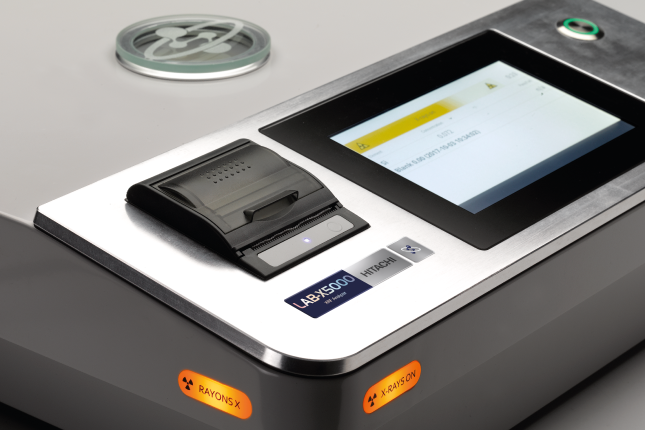Measuring the amount of silicone applied to release liners is an important aspect of quality control during manufacturing. If too little silicone is applied, the adhesive layer will permanently stick to the substrate, and too much increases manufacturing costs without further improving product quality. To control the silicone thickness, the industry commonly uses benchtop X-ray Fluorescence (XRF) analyzers such as Hitachi’s LAB-X5000, as they provide non-destructive, cost-effective and reliable analysis. They enable operators to adjust the manufacturing process quickly and help reduce materials costs while maximizing production yield.

The LAB-X5000 lets you use your glassine paper calibration for other paper types, including clay coated, without losing accuracy. After carrying out a single calibration with your glassine standards, all you need to do when moving to a new paper type (or new roll of paper) is to measure an uncoated ‘blank’ of the new type. The XRF equipment uses this measurement as a ‘correction factor’ when measuring coated samples, self-compensating for the new substrate.
XRF equipment typically uses helium to ensure stability for the measurement of light elements such as silicon (Si). The LAB-X5000 includes clever functionality to automatically compensates for changes in atmospheric temperature and pressure (which would otherwise affect results), and delivers reliable results with no need for helium at all. This means the cost and difficulty of obtaining, storing and using helium are completely removed.
The silicone coating process is not 100% perfect, and can result in small variations in silicone thickness over the coated paper. Also, XRF analyzers typically only measure a small area on the paper sample, and that can lead to results variability across the sample’s surface. The LAB-X5000 includes a sample spinner, which rotates the sample over the X-ray tube and detector to test a wider area and get an averaged reading. No matter how the sample is positioned in the analyzer, operators will get the same result for that sample.
The equipment is small enough to fit on a bench, and rugged enough to withstand a typical production environment for maximum uptime. Operator training is minimal: The samples are easy to prepare using the supplied disc cutter. The operator simply places the paper disk in the holder, puts it into the analyzer, and then presses the start button. Within seconds initial results are displayed on the screen. You can also display pass and fail messages, removing the need for the operator to interpret the results. When the measurement is complete, the equipment beeps to let the operator know the equipment is ready for the next sample.
The LAB-X5000 has the capacity to store up to 100,000 measurement results (and associated spectra). You can print out results on the integrated printer, or transfer them to a USB memory device. In addition, you can transfer results automatically via Wi-Fi to our ExTOPE Connect cloud service, and manage data in real-time from any computer. No need to be near the analyser to view results and create and share results. You can even access data from multiple Hitachi analysers in one cloud account for total visibility of your testing operations.
The LAB-X5000 brings accuracy, fast throughput and low-cost testing to the release liner industry, making it easier for manufacturers to meet product specifications while maintaining their profit margins.
Find out more about how the LAB-X500 can benefit your business.
Find out more